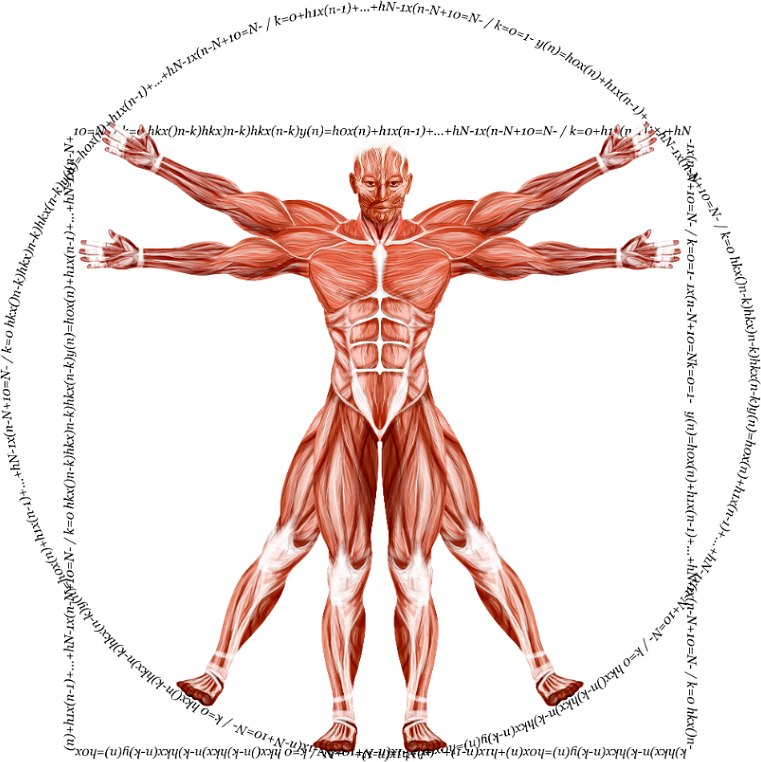Grip Width Secrets: Maximize Gains, Minimize Injuries
Unlock the secrets of grip width to optimize muscle growth, prevent injuries, and maximize strength training effectiveness with tailored tips for any lifter.

Key Takeaways
- Incorrect grip width can lead to discomfort, joint strain, and decreased workout effectiveness.
- Grip width affects which muscles are targeted during exercises like bench presses and pull-ups.
- Individual anatomy, such as shoulder width and arm length, plays a critical role in determining the ideal grip width.
- A wider grip often emphasizes chest muscles during pressing movements, while a narrower grip targets the triceps.
- Adjusting grip width can prevent injuries, improve muscle activation, and help break through training plateaus.
- Experimenting with grip width under proper guidance allows lifters to achieve safer and more efficient workouts.
When it comes to optimizing your strength training routine, one often-overlooked factor is grip width. From a distance, grip width might seem like a minor detail, but it directly impacts your performance, safety, and results during key exercises like the bench press, pull-ups, and even barbell rows.
Many lifters unknowingly compromise their efficiency or risk injury simply by using a grip that doesn’t suit their anatomy or training goals.
Grip width plays a pivotal role in engaging the right muscles and determining how effectively you perform an exercise. A grip that’s too wide or too narrow places unnecessary strain on the joints, disrupts movement mechanics, and misaligns muscle activation. Adjusting your grip to match your body and exercise can protect your shoulders, wrists, and elbows while maximizing muscle engagement.
This article will explore the "secrets" of grip width: how it affects exercises, why it matters, and how small changes in positioning can dramatically improve both results and safety in your workout routine.
The Importance of Grip Width in Exercise
Grip width determines how forces are distributed across your muscles and joints during any exercise involving a barbell or pull-up bar. During a bench press, wider grips tend to emphasize the chest, as more load is placed on the pectoral muscles. This positioning, however, increases stress on the shoulders, particularly the rotator cuff. For lifters with vulnerable shoulder joints, repeating this motion over time can lead to discomfort or even chronic injuries.
Conversely, a narrower grip in the bench press shifts the focus from the chest to the triceps. This can be particularly useful for increasing arm strength or addressing specific imbalances in pressing movements. However, narrow grips also reduce range-of-motion efficiency and may cause wrist strain if performed improperly. Finding the right balance is key to maximizing the effectiveness of the exercise while protecting your body.
Grip Width and Muscle Activation
The way you position your hands determines which muscle groups are activated during upper body exercises. For example:
- Wide-Grip Pull-Ups: With a wide grip, you place more emphasis on the lats, creating a V-shaped back. However, as the hands spread farther apart, the range of motion decreases, which can limit overall strength development.
- Narrow-Grip Pull-Ups: A closer grip more heavily recruits the biceps and lower traps, allowing for better contraction in those muscles while reducing lat engagement.
Understanding how grip width alters primary and secondary muscle activation allows you to tailor exercises to achieve your goals. Are you trying to grow your chest, strengthen your triceps, or target your lats? Adjusting your grip can help you focus your energy effectively.
Anatomy and Individual Differences
There is no one-size-fits-all grip width—your anatomy plays a crucial role in determining what will work best for you. Factors such as shoulder width, arm length, and overall joint mobility should be taken into account when adjusting grip. Lifters with broader shoulders may naturally prefer a wider grip, which keeps the barbell aligned with their shoulder joints and minimizes stress. Meanwhile, those with narrower shoulders often fare better with closer hand positioning.
Personal comfort is another determining factor. Movements should feel fluid and stable. If your shoulders or wrists feel strained during an exercise, it may signal that your grip width needs adjustment. Lifters who prioritize experimenting with grip widths under the supervision of a coach or through consistent trial-and-error often find their “sweet spot,” where exercises feel powerful yet natural.
Grip Width for Workout Plateaus
One surprising secret about grip width is its ability to break through workout plateaus. Lifters often struggle to make progress when their muscles adapt to repetitive movements. By experimenting with different grip positions, you can add a new stimulus to your training, forcing the muscles to activate in slightly different ways.
For instance, if your bench press has stagnated, consider switching to a narrower grip for several weeks to shift emphasis to the triceps or using a wider grip to target the chest more intensely. Similarly, alternating between wide-grip and close-grip pull-ups can introduce variety and prevent your back and biceps from hitting a plateau.
This approach not only boosts muscular adaptation but also improves overall mastery of movement patterns. Exploring grip variations is a simple but effective strategy for keeping your workouts challenging and productive.
Preventing Injuries through Grip Adjustment
Improper grip width is a leading cause of joint discomfort and injuries in strength training. A grip that is too wide during pushing exercises like the bench press or overhead press can overextend your shoulders, increasing the risk of impingement or rotator cuff strain. Similarly, excessively narrow grips can place undue stress on the wrists, elbows, and even the lower back if compensation occurs.
By choosing a grip width that aligns with your natural movement mechanics, you can significantly reduce the risk of joint pain or overuse injuries. For lifters new to compound exercises, starting with traditionally neutral grips—the bar positioned directly above the joints—can create a safer foundation. Gradually adjusting based on goals and comfort ensures enough variation without straining the body unnecessarily.
How to Find Your Perfect Grip
Finding your optimal grip width requires experimentation and self-awareness. Start by observing neutral joint alignment:
- Bench Press: Place your hands so that, at the bottom of the movement, your forearms remain vertical, and your wrists are stacked directly above the elbows.
- Pull-Ups: Begin with shoulder-width grips, then adjust outward or inward depending on which muscles you want to target and how your joints feel.
- Other Exercises: Overhead presses, rows, and bicep curls also benefit from customized grip positioning. Use variations that feel powerful but don’t cause strain in joints or muscles.
Recording your performance and paying attention to sensations in your joints and muscles can help you consistently refine your grip width.
Unlock Your Grip Width Potential
Grip width is more than just a detail; it’s the foundation of success in exercises like bench presses, pull-ups, and more. Whether your goal is to protect your joints, build muscle, or enhance performance, mastering the right hand placement can transform your workouts. From improved muscle activation to reduced injury risks, subtle tweaks to your grip can have dramatic outcomes.
Many lifters unknowingly fall into common grip width mistakes, leading to plateaus or discomfort. Adjusting your grip width allows you to target specific muscles more effectively, break through stagnation, and train smarter. It’s a simple yet overlooked way to elevate your fitness game and achieve your goals efficiently.
Ready to automate your progress and simplify fitness? Apps like Dr. Muscle make it easy to apply scientifically-backed insights like these, personalizing your workouts in real-time to help you get in shape faster. Try it free today!
FAQs
What is the ideal grip width for a bench press?
The ideal grip width varies depending on your anatomy and goals, but a general rule is to position your hands so that at the bottom of the movement, your forearms are perpendicular to the bar. This grip keeps your wrists and elbows aligned and reduces strain on your shoulders. Broad-shouldered individuals may need a wider grip, while those with narrower frames may benefit from a closer grip.
How does grip width affect muscle engagement in pull-ups?
Grip width determines which muscles are emphasized during pull-ups. A wide grip targets the latissimus dorsi for a broader back, while a narrower grip shifts the focus to the biceps and lower traps. Experimenting with grip positions helps you balance muscle engagement based on your training goals.
Can incorrect grip width lead to injuries?
Yes, using a grip width that’s too wide or too narrow can cause joint strain and overuse injuries. A grip that’s too wide may overstretch the shoulders and increase stress on the rotator cuff, while a too-narrow grip can strain the wrists and elbows. Proper alignment of joints is key to injury prevention.
How do I know if my grip width is wrong?
Signs of an incorrect grip width include joint discomfort, reduced range of motion, or poor control during the exercise. If you feel shoulder pain during a wide-grip bench press or wrist strain during a close-grip movement, it’s likely your grip width needs adjustment. Testing neutral positions and observing how your body feels can help.
Do wider or narrower grips improve strength faster?
It depends on your goals. Wider grips are more effective for building chest or lat muscles, while narrower grips strengthen the triceps or biceps. Combining grip variations in your training program ensures balanced development and helps you avoid plateaus.
Is grip adjustment only important for upper body exercises?
No, grip adjustments play a role in lower-body lifts too. For example, in deadlifts, a conventional grip focuses on overall strength, while a narrow grip can help isolate the posterior chain. Grip placement affects biomechanics and muscle engagement in many exercises, so it’s vital to consider how it applies across your routine.
Should I experiment with grip width or stick to one position?
Experimenting is encouraged, but always start within safe ranges that align with your individual anatomy. Over time, you can refine your grip width to balance comfort, safety, and effectiveness. Tracking your performance and noting any discomfort will help guide adjustments.
